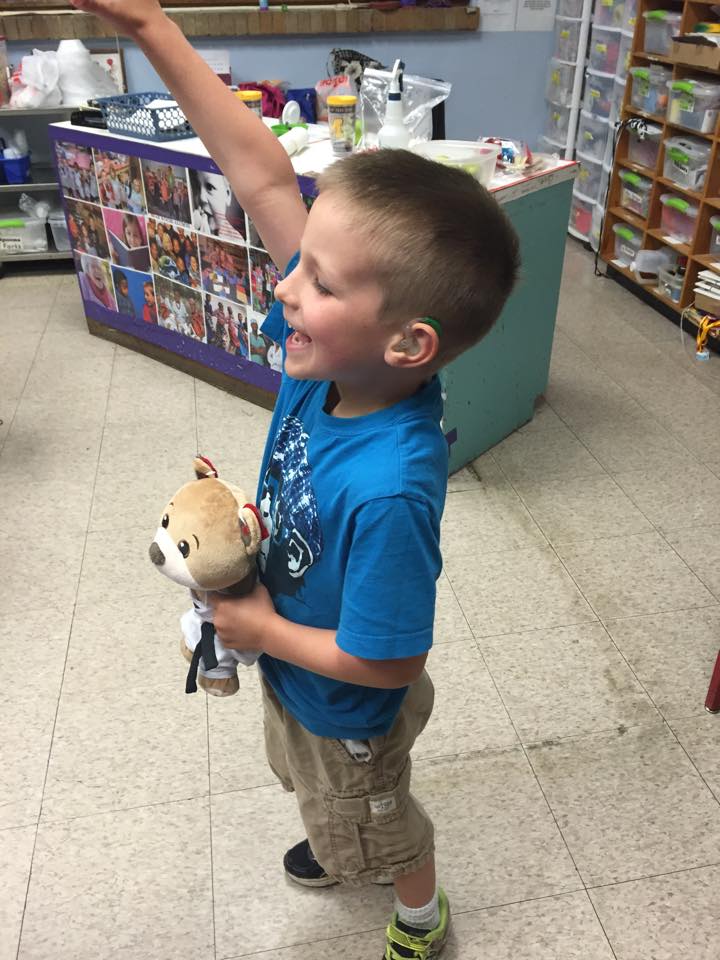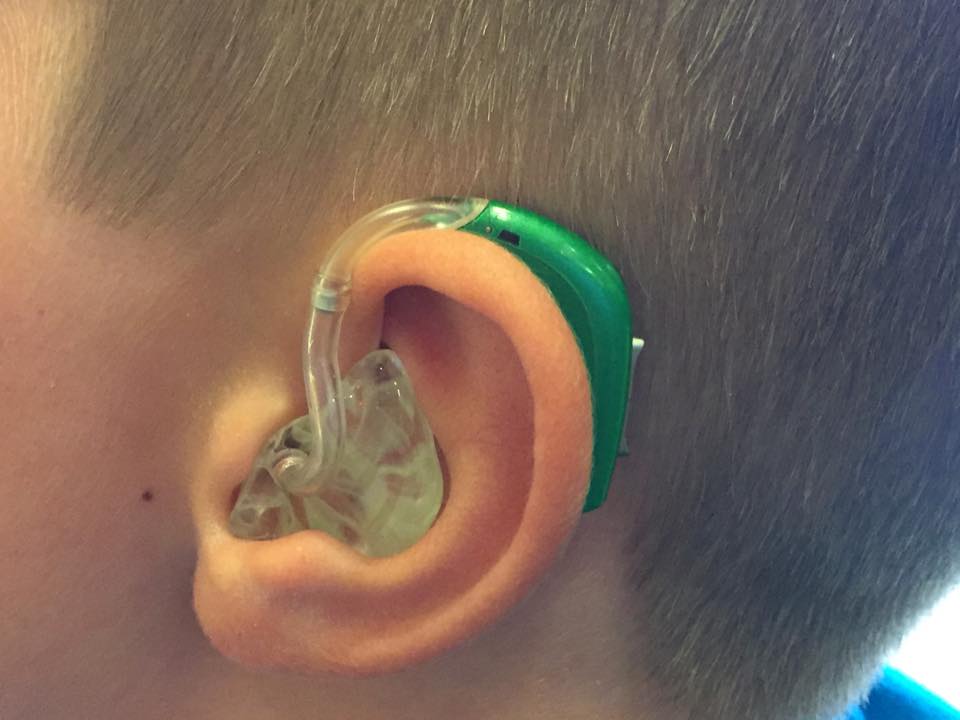Lack of insurance coverage means many kids won’t get help for their hearing impairment, which is linked to serious risks.
 When it comes to advocating for important issues, Barb Byrum is a pro. The Michigan Ingham County Clerk and former state Representative is not shy about speaking out on behalf of people who may not otherwise be heard.
When it comes to advocating for important issues, Barb Byrum is a pro. The Michigan Ingham County Clerk and former state Representative is not shy about speaking out on behalf of people who may not otherwise be heard.
So it’s no surprise that she’d do the same for her own child.
A mother of two, Byrum and her husband learned early on that their son, Bryce, was having hearing issues. He failed his very first hearing test as a newborn. Now in kindergarten, Bryce has failed nearly every hearing test he’s been given since, and was eventually diagnosed with conductive hearing loss in his left ear that fluctuates, known as a mixed hearing loss.
“We aren’t sure if his hearing will get worse, but we’re confident that it will not get better,” Byrum told me.
Diagnosing Bryce’s hearing loss required numerous tests, including multiple visits to an otologist — a hearing specialist — and an audiologist, speech and language diagnostics, and imaging tests including an MRI and CT scan. All of it was covered under Byrums’ insurance plan with only a small co-pay.
What they learned was not covered, however, is the cost of the hearing aid Bryce needs. Byrum said it came as a real surprise to her, even after six years in the Michigan Legislature, that hearing aids aren’t covered by private insurance in Michigan.
I never had to think about it, but I’ve been reaching out to the Legislature to start this conversation now. We’re fortunate we could afford the $1,450 for Bryce’s hearing aid, because he needs it, but that’s out of reach for a lot of families.Hearing impairment is a safety issue. It’s a learning issue for small people, so they can flourish in school. If it’s not covered, it’s a huge cost to society.
Bobby Mukkamala, MD, a Board-certified otolaryngologist in Flint, agrees about the importance of hearing aids for kids who need them.
“If you’re riding your bike in the neighborhood and you can’t hear a car, it’s a safety issue,” he says. “It doesn’t take much hearing loss to create a problem in that scenario.”
It’s also a learning issue — and because kids like Bryce still have some hearing, it often goes undiagnosed at first, Dr. Mukkamala says.
When you’re hearing out of one ear and not the other, it’s a more subtle deficit that’s not immediately apparent. A kid with one-sided hearing loss who is seated in the back of the classroom just by chance may perform miserably to the point of maybe being held back.I’ve seen many kids who aren’t immediately diagnosed because their issues seem behavioral. But it has nothing to do with their ability to learn. It’s their ability to hear. Early detection and treatment means kids won’t have to play catchup when it finally gets diagnosed.
Byrum has noticed a big difference in Bryce’s hearing since he was fitted with his hearing aid, which he is excited to have (especially since he got to pick out the color). “He’s not yelling all the time anymore,” she says. “He couldn’t hear himself.”
 Getting a hearing aid for Bryce was an important step — but it’s not the end of the cost for Byrum’s family. The batteries need to be changed once a week, and Bryce will outgrow his ear mold like kids outgrow their shoes. There’s one free hearing aid replacement included in the $1,450 price, but for an active kid that may not go far, Byrum says.
Getting a hearing aid for Bryce was an important step — but it’s not the end of the cost for Byrum’s family. The batteries need to be changed once a week, and Bryce will outgrow his ear mold like kids outgrow their shoes. There’s one free hearing aid replacement included in the $1,450 price, but for an active kid that may not go far, Byrum says.
You purchase a $1,450 tiny thing no bigger than a quarter, and as a parent of active children you think, ‘What happens when he loses it or goes swimming with it or a soccer ball hits him in the head?’ Usually a hearing aid lasts five to seven years, but with a little person we’ll be lucky to get five years out of it.
Plus, Bryce only needs a single hearing aid. The cost would be double if he had hearing loss in both ears, and some hearing aids can cost $3,500 per ear.
Even with the gains under the Affordable Care Act (ACA) that cover certain preventive services for kids, hearing aids still aren’t covered — something advocates don’t understand. After all, Medicaid covers hearing aids for kids. So why not private insurance?
“It may be the slippery slope argument,” Dr. Mukkamala says. “If insurance companies cover hearing aids for children the next issue will be ‘If it’s good enough for a kid with congenital hearing loss, then why not cover it for someone else?’ I suspect that may be the issue.”
Some states do require insurance companies to cover hearing aids for kids, but Michigan isn’t one of them. This “patchwork” of coverage is one aspect of the ACA that needs to be addressed, so that this important care is available to all children who need it.
It’s not just kids, either. Most private insurance doesn’t cover hearing aids for adults — nor does Medicare, something Michigan Congresswoman Debbie Dingell is working to change.
In the meantime, health reform advocates, physicians and concerned parents like Byrum are doing their best to raise the issue and advocate for change at the state and federal level.
Byrum isn’t just looking out for her own children. She’s looking out for every kid in Michigan who might need one or two hearing aids.
I think people need a lot of education. I’m fortunate that we can afford our son’s hearing aid, and that I have the flexibility to show up at school to advocate for my children. Many families don’t have those resources and it’s a huge issue.The impact on a child’s life — delays in speech, learning, education — is significant if they can’t get this needed device. So it’s important to shed light on this and hopefully correct it so all people can receive the services and devices they need.
[Photos courtesy of Barb Byrum.]



